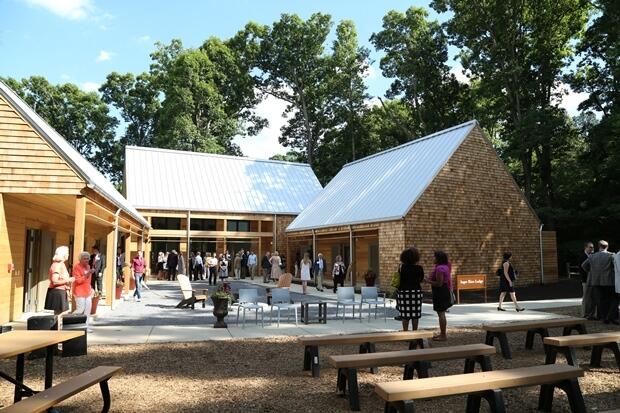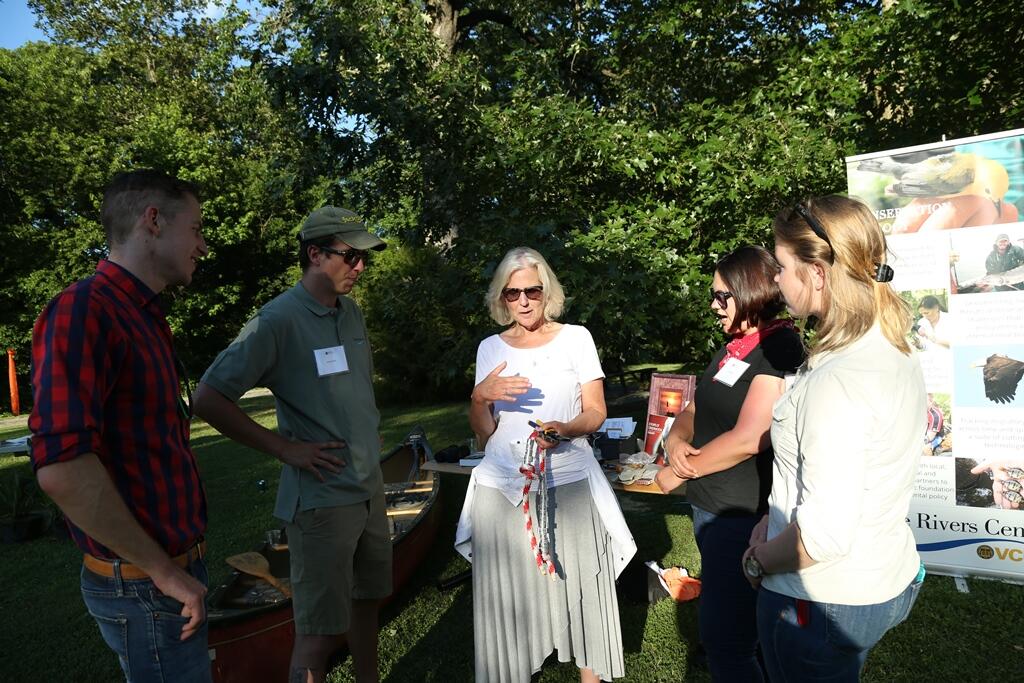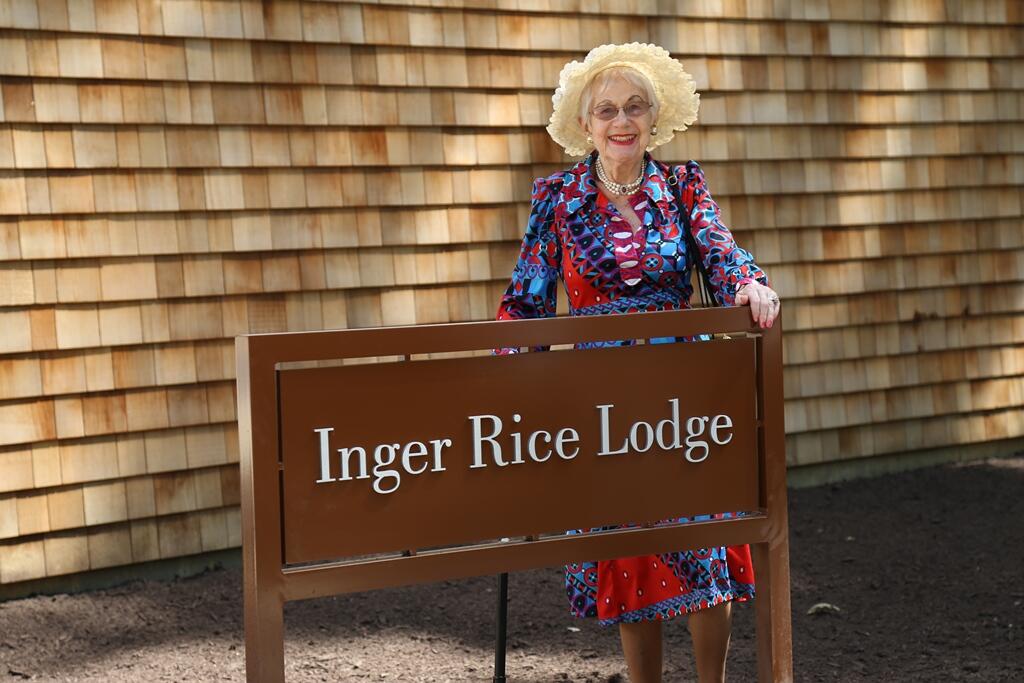
June 29, 2017
Rice Rivers Center overnight lodge helps scientists devote more time to researching wildlife and waterways
Share this story
Before first light, VCU Life Sciences students are already outside to get a first glimpse of the prothonotary warbler, a nimble, golden-bodied bird that frequents forested swamps and riparian areas along tidal rivers in the mid-Atlantic and Southeastern United States.
The undergraduate and graduate students are led by Cathy Viverette, Ph.D., assistant professor in VCU’s Center for Environmental Studies, and Lesley Bulluck, Ph.D., assistant professor in ENVS and the Department of Biology in the College of Humanities and Sciences. They are collecting data to inform conservation efforts on the warbler, which is of conservation concern.
The work is part of VCU’s 30-year-old Prothonotary Warbler Monitoring Project, which also sends students to Panama to study the birds after they have migrated for the winter. While in Virginia, Viverette, Bulluck and their student researchers board canoes to locate the birds. They are ready to catch an early morning high tide on the James River, near the grounds of the Rice Rivers Center, at Deep Bottom Park in Henrico County, and at Presquile National Wildlife Refuge, located on an island in the James River between Henrico and Charles City counties. Canoes provide easy access to nest boxes, which were made by area middle school students according to specifications for the VCU program and then installed along the James River and tidal creeks.
To beat the warblers, the researchers’ workdays can start as early as 4:30 a.m., a rough wake-up call considering the Rice Rivers Center — the closest of the study sites — is a 40-minute drive from the Monroe Park Campus. But the commute is no longer an issue after the opening of the Inger Rice Lodge earlier this month. The facility can temporarily house up to 22 researchers at the center.
“The housing will be a huge help because it is located between, and in close proximity, to our two main study sites. In particular, there’s more convenient access to the Benjamin Harrison Bridge to get to Presquile, which is a long way away from VCU,” Viverette said.

Viverette added that the facility could also improve collaboration within the Prothonotary Warbler Working Group — a consortium of conservation and research partners studying the birds across the breeding and wintering range.
“The lodge will provide opportunities to host collaborators and hold meetings, providing our students valuable training and networking opportunities” she said.
The Inger Rice Lodge was built with the purpose of furthering the field work of Rice Rivers Center researchers and colleagues visiting from other institutions. On-the-ground observations are the cornerstone of ecological research.
During the ribbon cutting for the lodge, Greg Garman, Ph.D., director of the Rice Rivers Center, spoke of how the lodge could further the center’s emphasis on experiential learning.
This will be a center that is for all disciplines and that is essential to making VCU one university
“Students can literally walk out of the door and go into the woods or the wetlands or onto the river because we have a 494-acre classroom out here,” Garman said. “What we are doing here is blurring the lines between academic instruction and research, and it’s really exciting. People can now come out here without going back to campus at the end of the day. We can do very immersive research and instruction.”
As a drone used by the center’s scientists whizzed overhead, VCU President Michael Rao, Ph.D., said the work of the center helps advance VCU.
“This will be a center that is for all disciplines and that is essential to making VCU one university,” Rao said.
The lodge was made possible through a $1.8 million donation from philanthropist Inger Rice, which financed most of the $2.3 million construction. Rice has given more than $6 million toward various Rice Rivers Center efforts since an initial gift in 2000 of 342 acres to develop the center on the banks of the lower James River in Charles City County. Since then, other land gifts have grown the site to 494 acres.
Rice said it was important she see her donation benefit a cause in which she believes.

“Some people have in their wills that they are going to donate money. Well, I have chosen to give three donations to VCU while I’m alive,” Rice said. “That’s why I’m here today — to see what’s being accomplished. I am very proud of VCU and I admire VCU’s faculty, staff and students for all they have done here already.”
The lodge is one of two final physical elements needed to complete site development of the Rice Rivers Center. VCU plans to break ground on a new research laboratory at the center next year. Rao announced a $1 million challenge grant from the Mary Morton Parsons Foundation to help fund the construction of the 14,000-square-foot research laboratory. The foundation will award the grant if VCU can raise $1 million from other sources in a year.
Subscribe to VCU News
Subscribe to VCU News at newsletter.vcu.edu and receive a selection of stories, videos, photos, news clips and event listings in your inbox.










